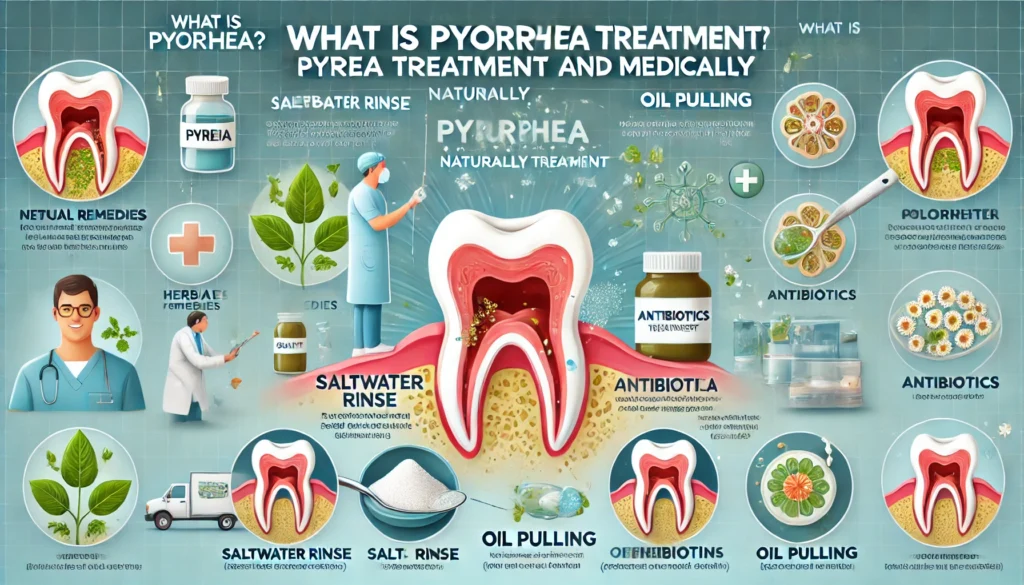
What is Pyorrhea?
Pyorrhea, also known as periodontitis, is a severe form of gum disease that affects the tissues surrounding and supporting the teeth. It is characterized by inflammation, infection, and the eventual destruction of the gums, periodontal ligament, and alveolar bone. If left untreated, pyorrhea can lead to tooth loss and has been linked to systemic health issues such as cardiovascular disease, diabetes, and respiratory infections.
Pyorrhea is a progressive condition that often begins as gingivitis, a milder form of gum disease. However, unlike gingivitis, which is reversible with proper care, pyorrhea involves irreversible damage to the structures that hold teeth in place. It is a common dental problem, affecting a significant portion of the global population, particularly adults over the age of 30.
Causes of Pyorrhea
The primary cause of pyorrhea is the accumulation of bacterial plaque on the teeth and gums. Plaque is a sticky, colorless film of bacteria that forms on teeth due to poor oral hygiene. When plaque is not removed regularly through brushing and flossing, it hardens into tartar (calculus), which can only be removed by a dental professional. Tartar buildup exacerbates gum inflammation and creates an environment conducive to bacterial growth.
Other contributing factors include:
- Poor Oral Hygiene: Inadequate brushing and flossing allow plaque to accumulate, leading to gum disease.
- Smoking and Tobacco Use: Tobacco use is a significant risk factor for pyorrhea, as it weakens the immune system and reduces the body’s ability to fight infections.
- Genetic Predisposition: Some individuals are more susceptible to gum disease due to genetic factors.
- Hormonal Changes: Hormonal fluctuations during pregnancy, menstruation, or menopause can make gums more sensitive and prone to inflammation.
- Medical Conditions: Diseases such as diabetes, HIV/AIDS, and cancer can compromise the immune system, increasing the risk of pyorrhea.
- Medications: Certain medications, such as anticonvulsants and immunosuppressants, can affect oral health.
- Nutritional Deficiencies: A lack of essential nutrients, particularly vitamin C, can weaken gum tissue and increase susceptibility to infection.
Symptoms of Pyorrhea
The symptoms of pyorrhea can vary depending on the stage of the disease. Early signs are often mild and may be overlooked, but as the condition progresses, symptoms become more severe. Common symptoms include:
- Bleeding Gums: Gums that bleed during brushing or flossing are one of the earliest signs of pyorrhea.
- Swollen or Tender Gums: Inflamed gums that appear red or purple and feel tender to the touch.
- Bad Breath (Halitosis): Persistent bad breath caused by bacterial infection.
- Receding Gums: Gums that pull away from the teeth, making teeth appear longer.
- Pus Formation: Pus between the teeth and gums, indicating an active infection.
- Loose Teeth: Weakening of the periodontal ligament and bone can cause teeth to become loose or shift.
- Pain While Chewing: Discomfort or pain when eating due to weakened tooth support.
- Tooth Loss: In advanced stages, teeth may fall out or require extraction.
Progression of Pyorrhea
Pyorrhea progresses in stages, starting with mild inflammation and advancing to severe tissue and bone destruction:
- Gingivitis: The earliest stage, characterized by gum inflammation without bone loss. It is reversible with proper oral care.
- Early Periodontitis: Inflammation spreads to the supporting bone, causing slight bone loss and the formation of periodontal pockets.
- Moderate Periodontitis: Increased bone loss and deeper periodontal pockets lead to noticeable gum recession and tooth mobility.
- Advanced Periodontitis: Severe bone loss, deep pockets, and significant tooth mobility or loss occur. This stage often requires extensive treatment.
Medical Treatment for Pyorrhea
The treatment of pyorrhea depends on the severity of the condition. Early intervention is crucial to prevent irreversible damage. Common medical treatment options include:
- Professional Cleaning: Scaling and root planing remove plaque and tartar from above and below the gumline, smoothing the tooth roots to promote healing.
- Antibiotics: Topical or oral antibiotics may be prescribed to control bacterial infection.
- Surgical Treatments: In advanced cases, procedures such as flap surgery, bone grafts, or tissue regeneration may be necessary to restore damaged structures.
- Laser Therapy: Laser treatment can be used to remove infected tissue and promote gum regeneration.
- Ongoing Maintenance: Regular dental check-ups and cleanings are essential to monitor the condition and prevent further damage.
Natural Treatment for Pyorrhea
In addition to medical treatments, certain natural remedies can help manage pyorrhea and support gum health. These remedies should be used as complementary approaches and not as a substitute for professional dental care. Natural treatments include:
- Oil Pulling: Swishing coconut oil or sesame oil in the mouth for 10-15 minutes can reduce bacteria and promote gum health.
- Saltwater Rinse: Gargling with warm salt water can reduce inflammation and kill bacteria.
- Aloe Vera: Applying aloe vera gel to the gums can soothe inflammation and promote healing.
- Turmeric Paste: Turmeric has anti-inflammatory and antimicrobial properties. Applying a paste of turmeric and water to the gums can help reduce symptoms.
- Green Tea: Drinking green tea regularly can reduce inflammation and improve gum health due to its antioxidant properties.
- Vitamin C-Rich Foods: Consuming foods high in vitamin C, such as oranges, strawberries, and bell peppers, can strengthen gum tissue and boost immunity.
- Neem: Chewing neem twigs or using neem-based toothpaste can help reduce bacteria and inflammation.
Prevention of Pyorrhea
Preventing pyorrhea involves maintaining excellent oral hygiene and addressing risk factors. Key preventive measures include:
- Brushing and Flossing: Brush twice daily with fluoride toothpaste and floss daily to remove plaque.
- Regular Dental Visits: Schedule dental check-ups and cleanings every six months or as recommended by your dentist.
- Healthy Diet: Consume a balanced diet rich in vitamins and minerals to support gum health.
- Avoid Tobacco: Quit smoking or using tobacco products to reduce the risk of gum disease.
- Manage Health Conditions: Control diabetes and other systemic conditions that may affect oral health.
- Use Antimicrobial Mouthwash: Rinse with an antimicrobial mouthwash to reduce bacteria in the mouth.
- Stay Hydrated: Drinking plenty of water helps wash away food particles and bacteria.
Conclusion
Pyorrhea is a serious but preventable condition that requires prompt attention and care. By understanding its causes, symptoms, and progression, individuals can take proactive steps to protect their oral health. Early diagnosis and treatment are essential to prevent complications and maintain a healthy smile. With proper oral hygiene, regular dental visits, and a healthy lifestyle, the risk of pyorrhea can be significantly reduced, ensuring long-term dental and overall well-being. Combining medical treatments with natural remedies can provide a holistic approach to managing and preventing this condition. Remember, your oral health is a vital part of your overall health, so prioritize it today for a healthier tomorrow.
